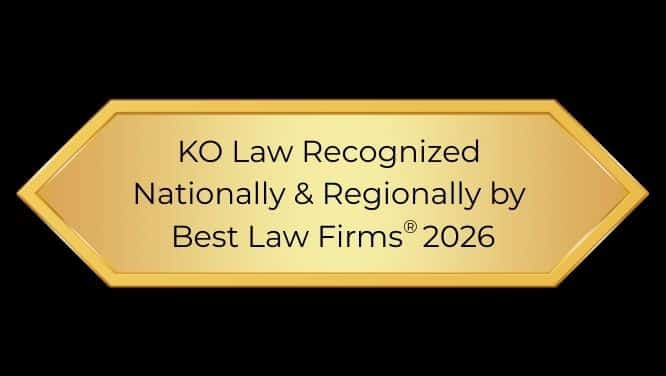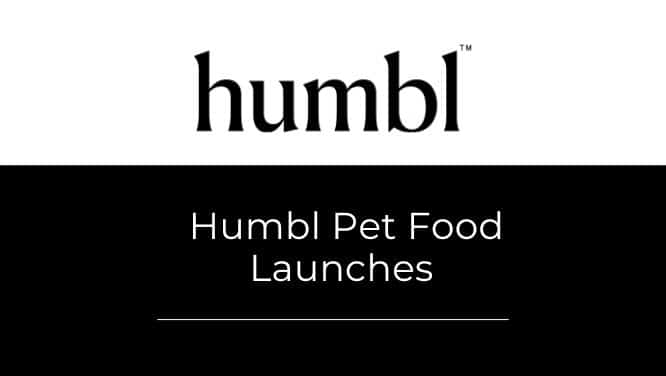How to Navigate the Legal Issues of Using Generative AI to Create Content

- Ben Oelsner
- |

- Chris Achatz
- |
- March 15, 2023
Image: Authors Created Images Using DALL-E and Midjourney
The use of generative artificial intelligence (AI) systems like ChatGPT, GitHub Co-Pilot, Midjourney, Stable Diffusion, Artbreeder, and DALL-E are becoming increasingly popular for developing new products, services, and software, and for creating other content. While the potential benefits of using this technology are extensive, the legal ownership of intellectual property (IP) created by generative AI can be complex and may create ownership and protection problems for companies that use it. In this article, we explore some legal issues surrounding IP ownership and protectability in generative AI created content, and provide some practical guidance to help companies avoid these problems.
The Legal Issues with Generative AI
Generative AI uses machine learning algorithms to generate content, such as software, images, music, artwork, text. This technology has the potential to create unique and innovative content that is not possible with traditional methods, but its usage is also raising questions about the copyrightability of such creations. The questions of whether the IP can be protected under existing intellectual property laws and who owns the IP generated by this technology can be complicated.
Under U.S. copyright law generally, the person that creates the content is the author of the work and the owner of the rights. “Human authorship” is necessary for copyright protection in the U.S. Usually, it assumed that humans are somewhat involved in the creation of any work. However, a majority of copyright laws throughout the world do not explicitly address Al-generated content. With generative AI, it is not always clear who the creator is or how much involvement a human has in the creation of the work. Since the AI algorithm is generating the content with very little human intervention (e.g., a prompt of the desired content), the line between the creator and the tool can be blurry.
In addition, there are concerns that in the process of using generative AI to create content, a generative AI tool may inadvertently plagiarize or infringe someone else’s content because generative AI uses others’ content—typically, in the form of training data—to learn to do what it does and it may deliver output that incorporates the works of others. The developers of the generative AI may not have the rights to use or deliver these sources of the content on which the AI is based.
Is Content Created Using Generative AI Protectable under Copyright Law?
The copyrightability debate has been ongoing, but a recent decision regarding Zarya of the Dawn and a subsequent policy statement by the United States Copyright Office (“Office”) have shed some light on the issue.
“Zarya of the Dawn,” a science fiction comic book authored by Kristina Kashtanova, is comprised in part of images created by the artificial intelligence platform Midjourney based on Kashtanova’s prompts. The book was submitted to the Copyright Office for registration, and initially, a copyright registration was obtained. Afterwards, the Office learned through Kashtanova’s social media posts that the author used artificial intelligence to create part of the book. The Office then rejected the registration on the grounds that the work lacked a human author. The Office currently interprets the Copyright Act to protect only human works of authorship and the Office will refuse to register a work if the Office determines that a human being did not create the work.
However, after further consideration based on input from the author, the Office reversed its previous decision and issued a new decision on February 21, 2023 that granted registration to the Zarya of the Dawn work as a whole but narrowed the registration to explicitly exclude material generated by artificial intelligence technology which were the images generated by Midjourney through Kashtanova’s prompts. The new registration only covers the original authorship that Kashtanova contributed to the comic book, namely, the “text” and the “selection, coordination, and arrangement of text created by the author and artwork generated by artificial intelligence.” The images generated by Midjourney were not protectible.
One of the key factors in the decision was the level of human involvement in the creation process. Kashtanova provided the AI system with prompts and parameters that Midjourney used to generate the artwork. The office concluded that Kashtanova’s selection of prompts did not demonstrate sufficient control over the resulting output to qualify her as an author (or co-author) of the AI-generated artwork, and determined that because the images generated by the AI are not the visual representation of creative, human-authored prompts, the artwork was not entitled to copyright protection. The Office rejected the argument that use of human-authored text prompts allows for copyright protection of the resulting images and found that a user of these AI systems does not have the human involvement or control over the creation of an image like a photographer would have when using a camera; thus it was insufficient to establish copyrightability.
On March 16, 2023, the Office published a policy statement clarifying its practices for examining and registering works that contain material generated by AI technology. The Office focused on copyright’s human authorship requirement and explained that if “AI technology determines the expressive elements of its output, the generated material is not the product of human authorship.” For instance, where artificial intelligence technology is provided “solely a prompt from a human and produces complex written, visual, or musical works in response, the ‘traditional elements of authorship’ are determined and executed by the technology—not the human user.” In contrast, the Office recognized that where a human arranges “AI-generated material in a sufficiently creative way,” or modifies AI-generated content “to such a degree that the modifications meet the standard for copyright protection,” the human-authored aspects of such works may be protected by copyright.
Ramifications of Lack of Ownership
If a company cannot claim ownership rights in AI-generated content, the company will not be able to rely on the protectability of such AI-generated content under copyright law. If critical IP of the company that it uses to conduct its business is software or other content created using generative AI, there may be significant business and legal ramifications, including:
- Employee or contractor use of AI: If a company’s employees or independent contractors create content for the company and they use AI to generate that content, the company may not have the rights to the content created that the company expects.
- Use of company data to train AI systems: If a company’s employees or independent contractors submit company proprietary software or content in order to train a publicly available AI system, such training data may become available to other users of the AI system, which may in turn limit the protectability of the company software or content.
- Enforcement risks: If the company has used AI-generated content that it cannot claim ownership rights to, it may face a situation where it cannot enforce its rights against third parties infringing the company’s intellectual property rights.
- Infringement risk: If appropriate rights to the content used by the generative AI have not been obtained, the resulting generated content could infringe third party IP rights which could lead to lawsuits against the company or its customers.
- Overpromising risk: The company cannot make claims about the efficacy of its software or content without adequate proof to justify its claim. If the company is not able to scientifically prove its claims, because the technology used to produce that software or content is a “black box” that cannot be adequately tested by the company, then the company risks making exaggerations with regard to its AI-generated software or content.
- Inability to monetize the content: The company may not be able to profit from the AI-generated content it has created because it cannot claim ownership rights. This could lead to financial losses and missed opportunities to generate revenue.
- Inability to assign intellectual property rights to a customer: The company may not be able to assign the content and intellectual property rights to third parties, such as customers, because the content is not protectable and therefore not owned by the company.
- Inability to transfer intellectual property rights: The company may not be able to transfer intellectual property rights to third parties, such as acquirers, because the content is not protectable and therefore not owned by the company. This could impact the company’s valuation and ability to secure funding or sell the business.
- Due diligence issues: During a financing transaction or acquisition of the company, due diligence may reveal that the company cannot claim ownership rights in its AI-generated content. This could raise concerns about the validity of the company’s intellectual property portfolio and could impact the transaction’s valuation or even cause the deal to fall apart.
- Algorithmic disgorgement: If the company does not have the necessary consents, licenses, or copyrights in the training data used to develop any company-built AI models, then regulators may require that the company delete such training data, and delete any models or algorithms that were developed using that training data.
Practical Guidance to Avoid IP Ownership Problems
For now, users of generative AI platforms should be mindful of the U.S. Copyright Office’s decision around protection of AI-assisted works other than as components of a compilation. There is a risk that such works will be deemed unprotectable by the Office, at least in part.
To avoid these risks, it is important for companies to ensure that they have proper ownership and control over the AI-generated content they create. To avoid IP ownership problems with generative AI, companies should take the following steps:
- Document creative process: Companies and individuals wanting to avail themselves of copyright protection in works created with the aid of AI platforms should carefully document steps undertaken to dictate the specific contents of the work, including the extent of any expressive contributions added to AI-generated output.
- Employee policies: Set a company policy about employee use of generative AI to create content, and whether any company proprietary content can be used to train the AI system. You may want to permit employees to use AI tools to spark ideas but if an employee uses this technique to come up with concepts, consider requirements that they create original content using their normal process, and not merely reproduce what the AI suggested.
- Contractor agreements: Enter into written agreements with any third-party developers or contractors who may be using generative AI on your behalf. Include provisions in independent contractor agreements that restrict contractors from using generative AI without the written consent of the company and an obligation to notify the company if AI was used by the contractor to create any content delivered. These agreements should clearly outline the ownership of any IP generated using the technology and should include provisions that require the contractor to defend and indemnify the company against any claims of IP infringement.
- Review IP ownership:
- Review your current IP portfolio and identify any assets that were developed using generative AI. If you are unsure whether any of your assets were developed using this technology, it may be helpful to speak with your development team or consult with an IP attorney.
- Review the IP ownership provisions in your contracts, including those with employees, contractors, and collaborators. Ensure that they are clear and comprehensive and include specific provisions relating to generative AI-generated content.
- Review the usage data provisions in your contracts. If any of your products or services were developed through the aggregated data generated by your customer’s use of your products or services, then you need to clearly articulate what rights you and your customers have in such usage data.
- Register IP: Register your IP with the appropriate authorities as soon as possible. This includes trademarks, copyrights, and patents.
- Do not publish AI-generated images or video: Artists and image libraries are suing the image generators for violating copyright by using their work as training data. Consider waiting to publish at least until the legal issues are more settled.
- Use proprietary data sets: Use generative AI platforms that have been trained on proprietary data sets, where the development process has been carefully documented, and appropriate licenses or assignments of intellectual property rights have been secured from any third-party contributors or collaborators.
- Obtain appropriate licenses: Determine whether you have the necessary licenses or agreements in place with the owners of the generative AI technology that you are using. These agreements should clearly outline the ownership of any IP generated using the technology. Obtain appropriate licenses for any datasets used in the generative AI process. Ensure that the licenses allow for commercial use and do not infringe on the IP rights of others.
- Perform due diligence: Conduct thorough due diligence on the datasets used in the generative AI process. Verify that they were obtained lawfully and do not infringe on the IP rights of others.
- Develop quarantine procedures for tainted materials: To the extent that you have determined that you do not have the necessary rights to certain IP that was used to create AI-generated content, or you simply do not know or have no way of knowing, consider ways that you can purge or segment the tainted materials, and plan for any business disruption that would result from the company’s inability to use such materials.
- Build a team: Work with an experienced IP attorney who can help you navigate the complexities of IP ownership and protection in the context of generative AI. Your attorney can help you draft licensing agreements and review any contracts you may have in place to ensure that your IP assets are adequately protected.
Proactive Measures Can Help Avoid Costly Legal Problems
Generative AI is a powerful tool that can help companies create unique and innovative content and new products, services, and software. However, it is important to be aware of the potential IP issues that can arise with using this technology. By taking the appropriate steps to address these issues, companies can avoid costly legal disputes and protect their IP rights.
At KO Law Firm, we are committed to helping our clients navigate the legal landscape of IP ownership in generative AI created content. If you have any questions or concerns about this topic, please do not hesitate to contact us.
KO partner Ben Oelsner advises startups, small and medium sized businesses, and growth companies with their intellectual property and technology transactions, IP protection strategy, and data security and data privacy strategy.
KO partner Chris Achatz represents companies, ranging from startups to Fortune 500 companies, in structuring and negotiating complex technology and data-related transactions, including data privacy and security matters.




